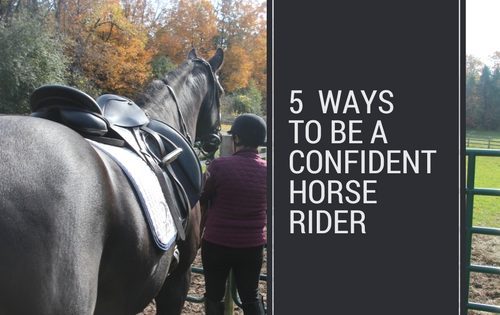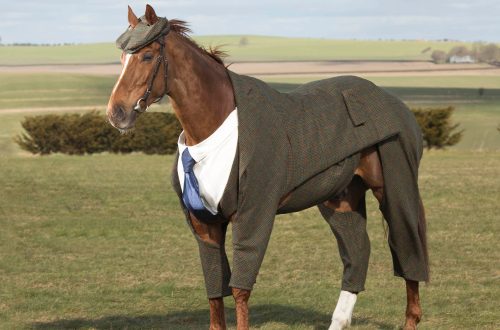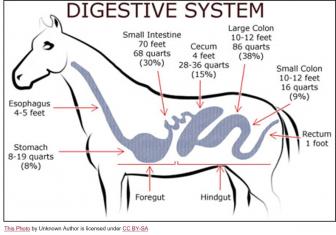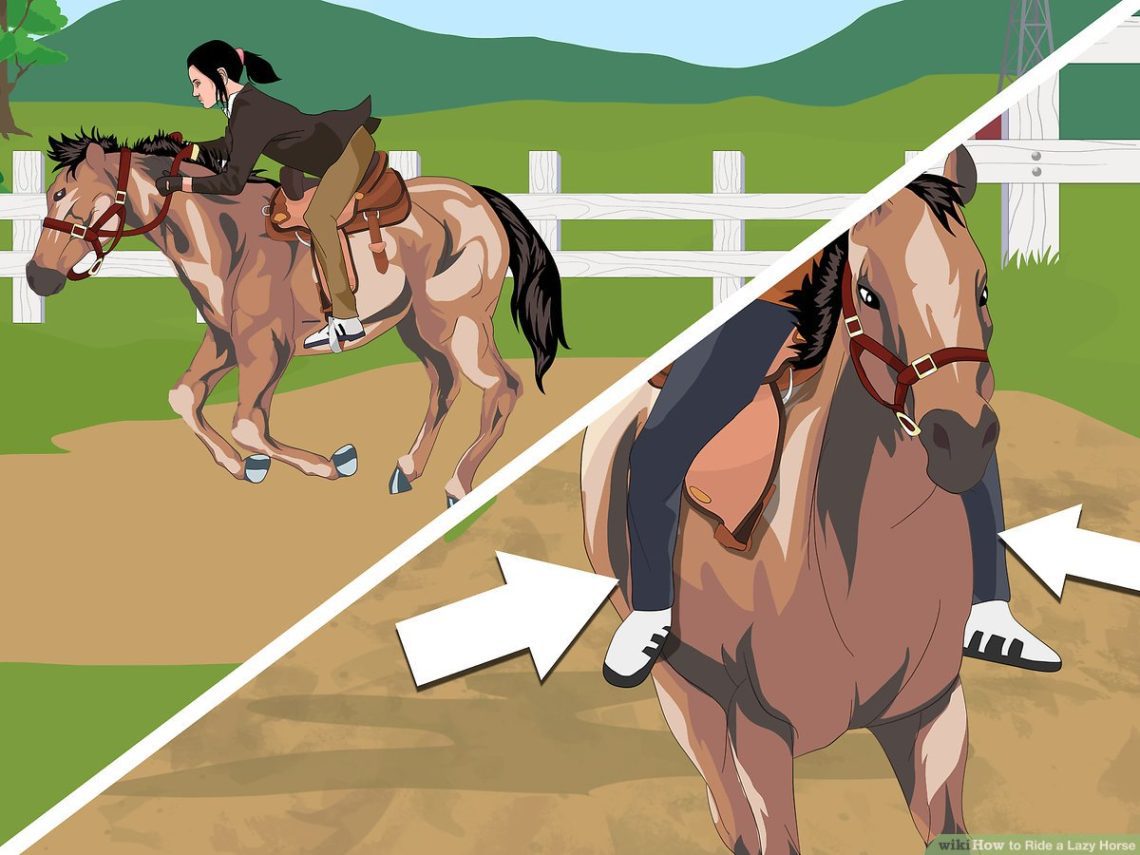
How to stir up a lazy horse?
Working with a lazy horse
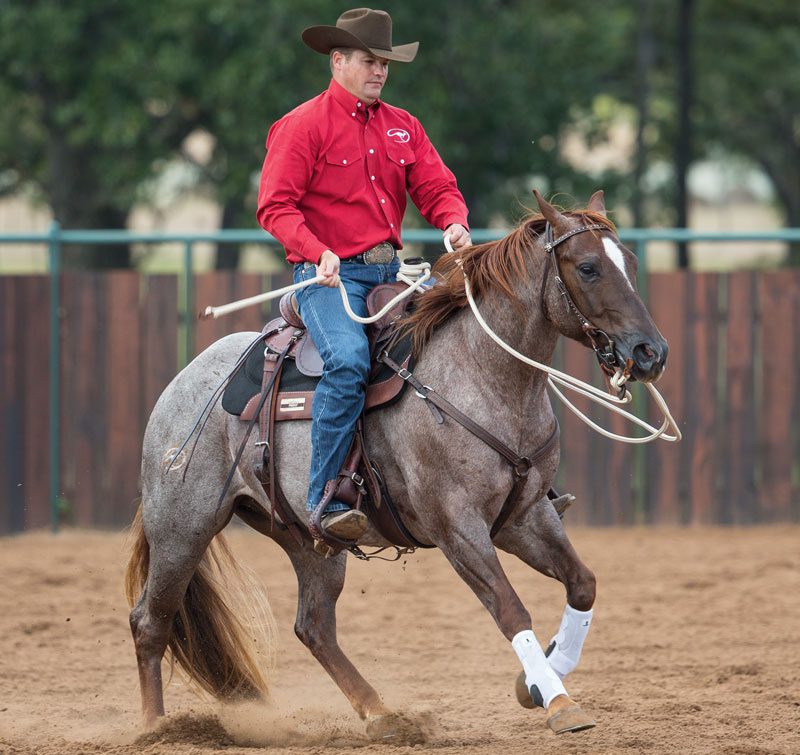
Riding a horse that refuses to move forward is like riding a Ferrari without the gas pedal. A spectacle pleasing to the eye, but a useless occupation. I teach horses to move forward from the foot using three separate signals: leg, sound and whip.
First, find a safe, controlled place to practice (such as a playpen or barrel). Give the horse a rein and don’t try to control it. Your only goal is to teach her to move forward from the pressure of her foot!
You introduce the walk signal to the horse, and then, when he has learned this lesson, you will begin to move on to other gaits. Ask the horse to move forward, squeezing his sides with both legs.
If the horse answers not immediately, give a sound command – smack your lips twice. This warns the horse that if he does not move further, he will feel uncomfortable. While making a sound that stimulates the horse, keep squeezing its sides with your legs.
If the horse is still not moving forward, slap the dressage whip behind the leg. You keep squeezing your sides with your legs and start gently tapping the whip. If the horse does not respond, you will have to increase the pressure until he moves forward.
As soon as the horse walks, immediately release the pressure: stop squeezing the sides, smacking and spanking with the whip. When the horse is moving forward at your desired speed, your legs should hang freely. Don’t squeeze her sides.
The goal is to ask with the least amount of pressure possible until you get the answer you are looking for. If the horse is lazy, be prepared to put in some effort until he moves forward. Lazy horses, when asked to move, are often beaten back in protest. So you have to be a confident enough rider to stay in the saddle and keep whipping rhythmically until your horse does what you ask.
If your horse stops moving, repeat the signals again until he moves forward. Always let your horse make mistakes and then correct him. This is the only way to teach her to be responsible for her actions.
As the horse moves forward, begin to transition from walk to halt and back to walk using one rein halt. By pulling back on both reins to stop a horse that doesn’t respect pressure, you can have it hang on the reins, resist the snaffle, raise its head, fight you, etc. Using one rein gives you more leverage and helps your horse learn to understand your seat signals.
Walk about 15 meters and then stop with one rein. Take your leg pressure off your horse’s sides, sit deep in the saddle, and then move your hand down on the rein and close to your hip. Maintain pressure until the horse stops and softens. She should touch your boot, leg, stirrup with her nose before you give up the reins.
Ask the horse to walk again using the same leg grip, sound and whip. If she responds, moves forward as soon as you squeeze her legs, do not add additional signals. But if the horse doesn’t go, build up the pressure.
Practice the walk-stop transitions until the horse starts to move with slight leg tension.
The same exercise will subsequently need to be used at the trot and canter. Be prepared: Many lazy horses will rebel and resist when the whip is applied to them.
Clinton Anderson (source).
Exercises to inspire a lazy horse
We have all seen riders kicking a horse in the sweat of their brow in a vain attempt to move it even a centimeter. The rider tries very hard, but the horse does not think to answer. Perhaps some of you have also been in the position of such a rider, wondering how to move this property.
While some horses are naturally calmer than others, most horses are not born lazy. They usually begin to show an aversion to exercise because the training program may have overwhelmed them at one point. As an equine fitness professional, I see this often. Regardless of the cause – and barring possible health issues, of course – the solution is to create a training program that will help eliminate laziness. So how do you motivate a lazy horse?
Definition of “lazy”
First of all, let’s agree on what we consider “lazy”. A calm horse that needs to be revived a little at the beginning of a lesson is not considered lazy. A lazy horse will not move even when you constantly use your legs and whip, a lazy one can be called one that makes you feel like you are working harder than he is.
A strong horse in good physical condition, whose muscles are adequately supplied with oxygen due to good blood circulation, very rarely shows resistance to exercise or is lazy. Laziness usually occurs when there is aimless, routine work or an inconsistent increase in the amount of workload that causes the horse to show resistance.
Exercises
Not all exercises work equally well with every horse, even the most tried and true ones. Everything may depend on the temperament of the horse, its physical condition, etc. When it comes to motivating a lazy horse, you will need to look for exercises that build him up physically and increase his energy levels.This applies to all manipulations with the horse, especially to work it in the hands). Try to keep the horse’s attention on you. If you are holding it in your hands, it should move quickly. Remember: any time you work with a lazy horse, there is a chance to “restart” his nervous system and make him work in a new way!
Exercise 1. Hangbahn
Most horses become bored or lazy early in training due to too much work at one speed or gait. The same thing happens if too much time is spent on relaxation, and there is no balance between rest and work. As a general rule, even with tournament horses, I don’t work on the same specific exercise more than three times a week.
To keep the horse fresh and willing to work, it is essential that riders train in a balanced and varied manner. Particularly successful is the use of what the Germans call hangbahn. In fact, this is an arena work performed outside the arena. This work works wonders, especially with horses that are bored in the arena.
Gently sloping areas are especially good, where there are several large trees that you can drive around. Almost any site will do, as long as there are no holes and stones. It doesn’t even have to be big. If different types of surfaces are presented on it (soft and hard ground), great. This will give you the opportunity to work on proprioception – the sense of body position in space. Work in this open area: do transitions, figure eights around trees, half halts and leg yields.
If you incorporate this into your daily training program, you will be surprised to find that your horse is much more alert and responsive in the arena. Riding outside the arena positively rewires the horse’s nervous system.
Exercise 2: Interval training
Generally, lazy horses respond well to interval exercises (intervals of movement at varying speeds). She is offered a predictable interval of work at a higher intensity, followed by a short-term reduction in intensity.
An example would be a canter or a fast trot for 15 meters from one cone to another, then another 15 meters of a calm trot, after another 15 meters of a canter or a fast trot. By continuing to work in this way, the horse will begin to anticipate the “quick” repetition that will revive him. In addition, these short bursts of higher intensity increase the flow of blood and oxygen to the main muscles responsible for movement, which will contribute to the development of strength.
If the horse is still lethargic, it may be helpful to have someone join you on horseback. Have the second horse gallop or trot behind you and then slowly trot (also behind you). This exercise will benefit the horse both physically and psychologically.
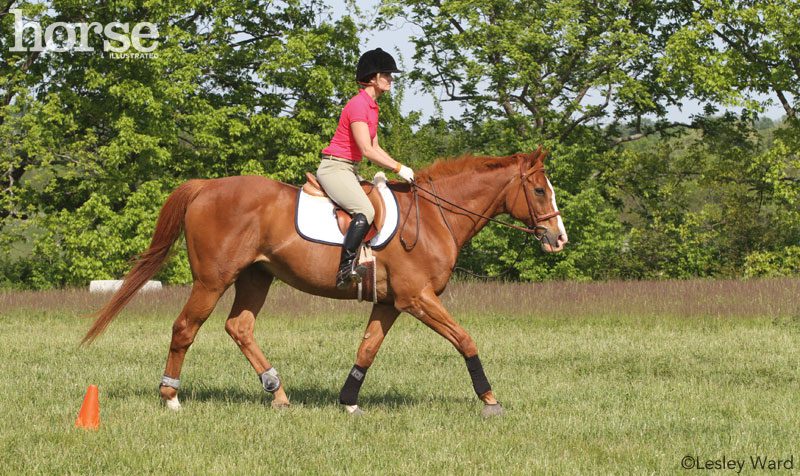
Use the cones to mark the points where you will change speed in interval work.
Exercise 3. Canter in the “box”
If the horse does not support the canter on its own and you constantly need to help it with your leg, try the following method: put two poles parallel to each other on the ground at a distance of about 3,65 m (or the length of your horse’s normal canter stride).
Get your horse into a canter and then step onto two poles. Guide the horse clearly to the center. The horse must pass the first pole, land neatly with all four feet between the first and second poles, and then just as calmly pass the second.
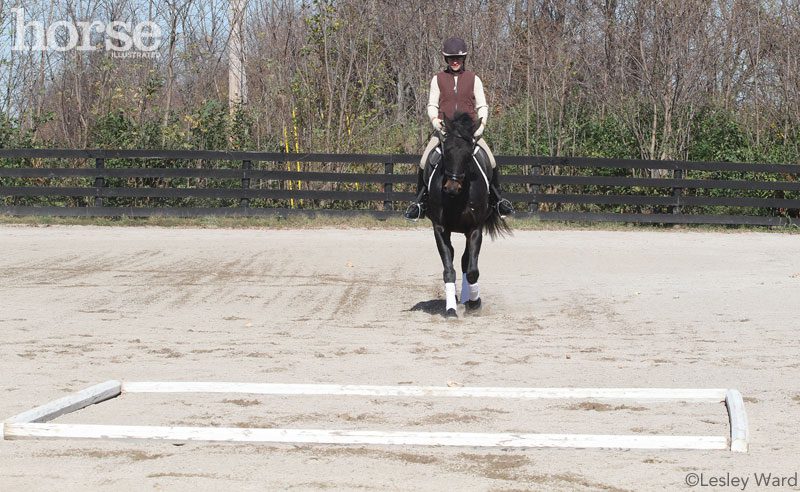
The poles will pull the horse forward and he will move forward on his own without you having to push him forward. It also helps set up the canter by putting the horse in a situation where he needs to become more balanced. This will improve your gait in the long run.
Exercise 4. Raised Poles
Another exercise that works with most lazy horses is to ride poles about 15-20 cm off the ground. Most riders are aware of the benefits of working on the cavaletti, but many too often limit themselves to lining them up and working in two directions.
In the case of a lazy horse, it will be much more useful to lay them out in random places in the arena. It won’t let the horse run mechanically, fall on the front and inaccurately cling to the poles with your feet. By placing cavaletti throughout the arena, you will keep the horse alert. In addition to being more responsive and attentive to you, she’ll get more exercise every few steps. If the horse freezes at the trot and canter, I spend the entire introductory part of the training “riding” on poles randomly scattered around the arena and raised. I find this to be much more effective than trying to push the horse forward by digging into it.
When training a horse to be more calm in nature, it is necessary to bring him out of his usual state every moment. You must be careful to avoid work that promotes calmness. Consistency is critical. If you sometimes allow a horse to be lazy and then punish him for it, he will become confused. Encourage her to constantly think about where and how she is moving, and you will see results.
We remove the restriction
Most of the horses that I see are constantly working in arenas, they are always limited in some way, and this takes a toll on their bodies and psyche. Steps become shorter, and the nervous system becomes duller. In essence, they float in semi-sleep, making no effort for sensory awareness or movement. They often do not experience discomfort, but somewhere a limitation in the range of motion develops – shoulders, back, hind limbs – their nervous system is overloaded. In other words, the horse’s central nervous system sends only one signal to tell the body how to move: slowly. Every time I see a horse dragging its hind legs or grabbing the ground with its front hooves, I understand what the problem is.
For example, the stiffness of the horse’s longest muscles, its back muscles, stiffens the muscle latissimus, which affects the freedom of movement of the front legs. You will feel like the horse is ignoring you (and to some extent it is), but bоThe biggest problem is her inability to do a better job.
Horses in this category require physical therapy combined with training. Until their bodies change, their work will remain the same. If your veterinarian has ruled out any obvious physical causes of discomfort, ask your equestrian massage therapist for guidance on areas of the body that need to be worked on to help the horse.
Zhek A. Ballu (a source).
Transfer Valeria Smirnova.
- Kiril Fetrov 7 2018 of August
An interesting phrase is a lazy horse. Maybe she’s in a bad mood that day. Maybe she didn’t eat well? But in the end, not every horse accepts a new person. The horse becomes attached to its owner. And rarely that allows other people to sit on themselves. Answer



